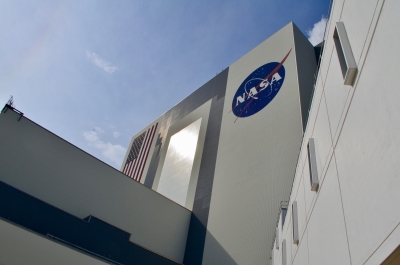NASA’s recent Moon program, Artemis will land the first woman and a person of colour on the Moon by 2024. It will be the first of its kind expedition. The goal of NASA’s Artemis program is to explore as much of the Moon’s surface as possible and create sustainable missions to the Moon by 2028. The aim of the program is not only to learn new information about the Moon, but use that information as a stepping stone to get to Mars.
This program is part of the revival of the American space program and aims to establish human presence on the Moon with sustainable yearly missions by 2028. It is interesting to note that the programme is named after the goddess of the Moon in Greek mythology, Artemis, and is the twin sister of Apollo, tying it back to NASA’s Moon mission of the 1960s that landed the first person on the Moon.
Acting NASA Administrator Steve Jurczyk revealed the additional mission objective in a press release on Friday, praising a freshly released Biden administration budget proposal that would give the agency $24.7 billion.
There is a new excitement in NASA, “this funding keeps NASA on the path to landing the first woman and the first person of colour on the Moon under the Artemis program, his goal aligns with President Biden’s commitment to pursue a comprehensive approach to advancing equity for all."
"We know this funding increase comes at a time of constrained resources, and we owe it to the president and the American people to be good and responsible stewards of every tax dollar invested in NASA," Jurczyk told, "the NASA workforce and the American people should be encouraged by what they see in this funding request. It is an investment in our future, and it shows confidence in what this agency has to offer.”
While the first cadre of astronauts for the Artemis program were announced in December, the first two crew members for Artemis III in 2024 have yet to be announced. The initial group of 18 represents a diverse team of astronauts including those new to NASA and veterans of space flight.
The Artemis astronauts include 18 astronauts who will staff the mission. The group has 9 women and several people of colour including Indian-American Raja Chari.
While it's unknown if a person of colour will be among the two first astronauts to return to the moon since the Apollo program in 1972, "these are historic moments in advancing equity for all of mankind," Bhavya Lal, an Indian-American, acting NASA chief of staff, told CNN.
"Women and people of colour represent a significant contributing portion of all facets of NASA's workforce, and the last two astronaut classes selected have included the highest percentage of women in history," Lal said. "Fifty percent of the 2013 National class was female and 45% of the 2017 class. And today, African American, Asian Pacific Islander, Hispanic and multiracial astronauts are about a quarter of NASA's active astronaut corps."
Returning astronauts to the moon will act as a proving ground before sending them on to Mars — another long-term goal of the Artemis program.
When astronauts explore the lunar south pole, which has never been visited by humans before, they will build on the legacy and science gained during the Apollo program and carry it into a new century.
Only 12 people have ever stepped foot on the moon – all Americans and all men. But the most recent landing came almost 50 years ago. Apollo 17, the final mission of NASA’s Apollo program, took place in 1972. When NASA announced the Artemis program under President Trump in 2019, the space agency pledged to land the "first woman and next man" on the lunar surface within five years. After that, the next goal is sending astronauts to Mars.




















